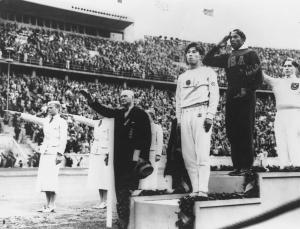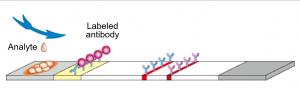'Less is more’ is a perfect expression of the aesthetics of modernist design and was a motto of architect Ludwig Mies van der Rohe. He was well known for his architectural style, which replaced architectural decorations and bricks with iron and glass. Through these words, he declared that the aesthetics of simplicity would dominate the world, pushing away the decorative designs of the old times. This motto was the result of accepting and practicing the demands of mass consumer society and industrial efficiency. Just over 100 years ago, it was taken for granted that furniture had to be made of wood, and buildings had to have decorations, which is the opposite of the world we live in now. Just as he said, now people live a life full of minimal and simple designs. It is the Bauhaus that has had a great influence on today's overall modern design.
While Ludwig Mies van der Rohe studied in Bauhaus, he applied ‘less is more’ in various fields, such as furniture and building design. Later, he became the 4th director of Bauhaus. The Bauhaus was an architecture and art school in Germany from 1919 to 1933. Another art that shares the philosophy of ‘less is more’ is minimalism. Minimalism is an art and cultural trend that pursues simplicity. It took place mainly in American visual arts and music in the 1960s and 1970s, avoiding all techniques and trying to express fundamental things. The Bauhaus architecture and minimalism suggested by ‘Less is more’ is important because they look at our magazine’s main topic, ‘short’, that is, the lack of something, from various perspectives.
Bauhaus and Ludwig Mies van der Rohe
The Bauhaus style has had a wide range of influences on modern design. The goal Bauhaus revealed at the time of its establishment was the ‘discovery of community through art.’ What Bauhaus tried to do was make human life more convenient through art. The goal of Bauhaus was not to create specific styles, systems, beliefs, norms, secrets, and trends. In 1931, Ludwig Mies van der Rohe transformed Bauhaus into an architectural school.
Van der Rohe first introduced his architectural style at the 1929 Barcelona Expo. The Barcelona Expo was an event where new technology, such as cars and technology using electricity, was showcased, and new industrial materials, such as steel, gave hope and excitement for the future. At that time, the expo was an important venue for showing off the advanced technologies of European countries. Germany had to change its image as an industrial country after the defeat of World War I, and the Barcelona Expo was an important opportunity to do this. To make that happen, Germany entrusted the design of the German Pavilion, a temporary structure for events for the fair, to Ludwig Van der Rohe, who was an unknown artist at that time.
The pavilion consisted of architecture with only minimal elements, such as roof and pillars. The outer walls of the free flat buildings were finished with glass, eliminating the boundaries between the inside and the outside, and partially built walls did not divide the space fully. Space flowed without being trapped. There were also no decorations. It was an architectural style that became closer to the essence as the form was more restrained. This was the opposite of the Art Nouveau style, which valued the decorations that were popular at the time. The Barcelona Pavilion itself presented a new direction of architecture as an object. Inside the Pavilion, there was furniture made of steel called a “Barcelona Chair”. It was designed by Van der Rohe. Making furniture out of materials other than wood was unimaginable at that time, but it created more synergy with the building.
Minimalism Art
Minimalism was an art movement that took place in the 1960s and 1970s and was a movement that pursued simplicity. It was based on the thought that its nature could be seen when expressing the basics of things by minimizing techniques, which is like the value of Van der Rohe's idea of ‘Less is More’.
Minimalism excluded the intervention of artists' emotions and ideas to reveal the essence of the objects themselves. The aesthetics of simple design were maximized by emphasizing the construction materials. The artist wants the viewer to respond to only what is in front of them. Minimalist painter Frank Stella famously said about his paintings ‘what you see is what you see.’
Minimalist art focused on using geometric designs and simple materials. Materials in the same color and shape were repeatedly stacked. Continuous vertical and horizontal lines created a rigid feeling and blocked the viewer's empathy. Sol Lewitt, a representative artist of Minimalism, paid attention to ‘repetition’. He showed thoroughly calculated minimalism by mobilizing principles of geometry and mathematics. With the idea that the artist could only create order, he used industrial products as materials and used cube structures with dots, lines, and faces, which are the smallest units of sculpture.
Minimalist Design
One of Minimalism's influences on our lives is in design. As technology advances rapidly, modern people live in an era of an oversupply of information and an abundance of means of communication. As a result, some people have started to pursue something simple, an increasingly minimal way of life. But, people do not simply chase something less. They value quality over quantity and prefer intensive, implicit, and efficient products and services. One of the trends that follows this is Instagram. In Korea, Instagram has the third-largest number of users after YouTube and Naver. The main characteristic of Instagram is that it has a minimal design, unlike other SNS platforms. It has only essential functions on SNS, such as Instagram story functions, posts, and direct messages, and icons symbolizing them are also concisely expressed.
As for Minimalism design, Dieter Rams is a designer well known for minimalism. He said he should create designs needed for life but should not be overly focused on attracting attention or stimulating the senses. He believed that true, simple, and humble design was a real practice of beauty. He is a designer who was one of the key figures in the German design renaissance in the 1960s. He is a representative figure of minimalist designers. After learning architecture from Hans Suther, an architect influenced by the Bauhaus, he joined a German consumer product company, Braun, in 1955. He served as Braun's chief designer from 1961 to 1995. The product designs he created at Braun have been selected for regular collections of world-famous art galleries and introduced as part of a field representing contemporary art.
Dieter Rams said minimalist design should be able to satisfy people's aesthetic needs. What was considered important was the harmony between the original functionality of the product and the form revealed to the outside. The aesthetics of the design is based on the balance of form. Rams’ design philosophy was, literally, simple, and was described by his colleague Rudolf Schonwandt as ‘order rather than confusion, quiet rather than loud, unobtrusive rather than exciting, sparse rather than profuse, and well-balanced rather than exalted.’ Although design from Dieter Rams was ridiculed as ‘less is bore’ by the postmodernist movement that valued individuality, Minimalism is drawing attention again.
Dieter Rams is so respected that Apple's former chief designer Jonathan Ive said in an interview that ‘Apple's design is a reference to Dieter Rams’s design.’ Considering the impact of minimalist designs by Apple and other tech companies on our lives today, Minimalism's influence is enormous. In addition, as the Bauhaus building, which shares the same idea, was the beginning of modern architecture, ‘less is more’ can be seen as one of the core concepts in modern society. In my opinion, the Minimalism movement will continue to thrive as a trend because of how important the idea ‘less is more’ is in our lives. We usually look negatively at the word ‘short’ because the nuance that ‘short’ is not enough. However, Van der Rohe's Bauhaus architecture and minimalism are paradoxically lacking, and their achievements are closely related to our lives. Let's change our perception of ‘short’ while looking at the Minimalism and Bauhaus architecture.
Did you know?
Minimalist music refers to a style of composition that intentionally simplifies rhythm, melody, and harmony. It can be called ‘music made of minimal elements’ in which geometric features are emphasized, and expressive techniques are avoided. It is music that frequently utilizes repetition and is harmonically stagnant and has pulses that flow to constant beats or pulses. Sound is constructed through a gradual process, and the way this music works can be recognized when first listening. Teddy Riley's "In C," which made music by stacking loops, does not have a fixed instrument composition or beat.
Literary minimalism refers to writing with a small, specific focus, usually devoid of flowery, excessively descriptive language and backstory. Literary minimalism prioritizes brevity, allowing the reader to make up for a lack of verbiage with their imagination. Minimalism focuses on slices of life and general context rather than relying on literary conventions. Minimalist writers try to gain more effect by boldly omitting parts that are considered unnecessary. Raymond Carver and his work, "Will You Please Be Quiet, Please?" is considered an example.
Hyunrim Kim arnoldkim123@naver.com
<저작권자 © 홍익대영자신문사, 무단 전재 및 재배포 금지>





